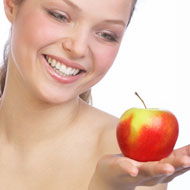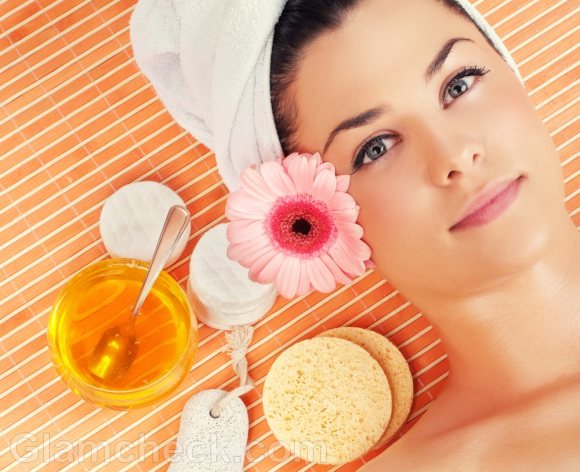Diabetes - General Information
Artificial Pancreas Safe, Effective in Early Study
An "artificial pancreas" designed to deliver the key blood sugar-regulating hormone insulin to diabetic patients without the need for injections has been found safe and effective in a preliminary study with ten patients.
The device is an insulin reservoir, implanted in the tissue lining the abdominal cavity and connected to a sensor implanted in the jugular vein. The reservoir requires insulin refills every month or so. When the sensor detects an increase in blood glucose, the reservoir delivers the required amount of insulin.
Blood Glucose Testing
Most insurances now pay for diabetics to have blood glucose monitoring equipment in the home. Keeping the machines clean and in good working order are vital for accurate results. Follow the manufacturers' instructions for proper cleaning and maintenance.
Blood Glucose Testing Tip
Be sure hands are clean before performing the test, but don't use alcohol to cleanse your fingertip. It's drying and may cause fingertips to crack. Wash hands with a mild antibacterial soap like Dial.
Diabetes Test After Heart Attack Shows Future Risk
Testing patients who have had heart attacks for signs of diabetes before they leave the hospital may identify those with the highest risk of future heart attacks. Many people hospitalized for a heart attack have undiagnosed diabetes or prediabetes, a term coined to describe the millions of overweight and obese people who have blood sugar levels suggesting an elevated risk of full-blown diabetes. Medications, exercise and diet changes, all of which can restore normal glucose levels, may reduce the risk of heart attacks in patients who have already had a heart attack.
Diabetic Dental Care
Immaculate mouth care is a must. Diabetics are much more prone to gum disease. More frequent dental visits may be needed and careful brushing and flossing are a necessity. Avoid ill-fitting dentures that may cause mouth sores.
Diabetic Eye Care
If you're a diabetic, regular visits to your eye care professional are a must to prevent problems that could lead to blindness.
Diabetic Foot Care Tips
* Take the pressure off your feet by losing weight if you are obese.
* Inspect your feet at least once per day. If you can't see well, ask someone to do it for you.
* Wash feet with mild soap and lukewarm water daily.
* Wear white cotton socks rather than synthetic ones with dyes.
* Don't go barefoot or wear ill-fitting shoes.
* See a podiatrist regularly for toenail trims and other routine maintenance.
Diabetics Are Prone to Foot Problems
Diabetics have decreased sensation and circulation in their feet making them prone to foot infections/wounds that could eventually lead to amputation.
Drug Could Delay Diabetes
Acarbose, a drug that blocks the digestion of starch, could prevent or delay the development of the most common form of diabetes in those with slightly high blood sugar.
Exercises to Avoid
Diabetics should avoid exercises that involve pushing or pulling heavy objects and lifting weights. Blood sugar levels and blood pressure are raised during this kind of exercise.
FDA Approves New Sweetener Neotame
A non-nutritive sweetener said to be 7,000 to 13,000 times sweeter than sugar received approval from the U.S. Food and Drug Administration to be marketed as an additive in candies, soft drinks and various other products.
Like other familiar sweeteners, Neotame is a white crystalline powder that dissolves in water. It is made by Monsanto, which also makes NutraSweet's sweetener Equal. Neotame is approved for use in baked goods, nonalcoholic beverages, chewing gum, confections, frozen desserts, gelatins and puddings, jams, jellies, fruit, juices, toppings and syrups.
The FDA declared the product to be safe for consumption after reviewing more than 113 animal and human studies, some of which looked at any possible links with cancer-causing or neurological side effects.
Inhaled Insulin
Inhaled insulin may soon offer an alternative to needles for people with diabetes.
Novo Nordisk, a Denmark-based company, has ongoing clinical trials to test the safety and effectiveness of an electronic pulmonary insulin system. They say it may be available in the United States and Europe within a few years.
This is the first electronic pulmonary insulin system currently being tested in clinical trials. It works by converting a special liquid insulin into aerosol particles, which are inhaled into the lungs.
Regular Exercise Is a Must
Exercise is extremely important for diabetics as it strengthens the cardiovascular system, increases circulation to the arms and legs and helps control blood sugar levels. Walking, jogging, rowing and swimming are best.
Shoes for Diabetics
* Avoid plastic shoes and waterproof shoes. They encourage perspiration and fungal growth.
* Avoid tight or unventilated footwear.
* Don't wear boots all day.
* Choose cotton or leather shoes.
* Wear sandals as much as possible in the summer.
* Don't wear the same shoes two days in a row.
* Air shoes in the sun to inhibit fungal growth.
Small, Frequent Meals
Diabetics should follow their American Diabetic Association diet and eat small meals more frequently such as three small meals with one or two healthful snacks between meals. This helps maintain a more stable blood sugar level.
Treatment of Hyperglycemia
Some symptoms of hyperglycemia (high blood sugar) are: excessive urination, weight loss, excessive hunger and thirst. If you are experiencing any of these symptoms, you should see your doctor.
Treatment of Hypoglycemia
Some symptoms of hypoglycemia (low blood sugar) are: cool, clammy skin, numbness of the mouth, a fluttering in your chest, hunger and feeling faint. Emergency treatment includes ingesting something containing sugar like orange juice, a candy bar, or sugared soda pop. Follow that with some cheese or peanut butter crackers to sustain your blood sugar level.
What's an Exchange?
In an exchange diet, foods that are similar are grouped together. Serving sizes are well defined so that each will have the same amount of carbohydrate, fat, and protein as any other. Foods can be "exchanged" or traded with others in a category while still meeting the desired overall goals. Exchanges can be applied to most any eating situation and may make it easier to follow a prescribed diet. For example, if a nutrition plan calls for one starch exchange a person could choose 1/2 cup of cooked pasta, OR one slice of bread, OR a small (3 oz.) baked potato.











